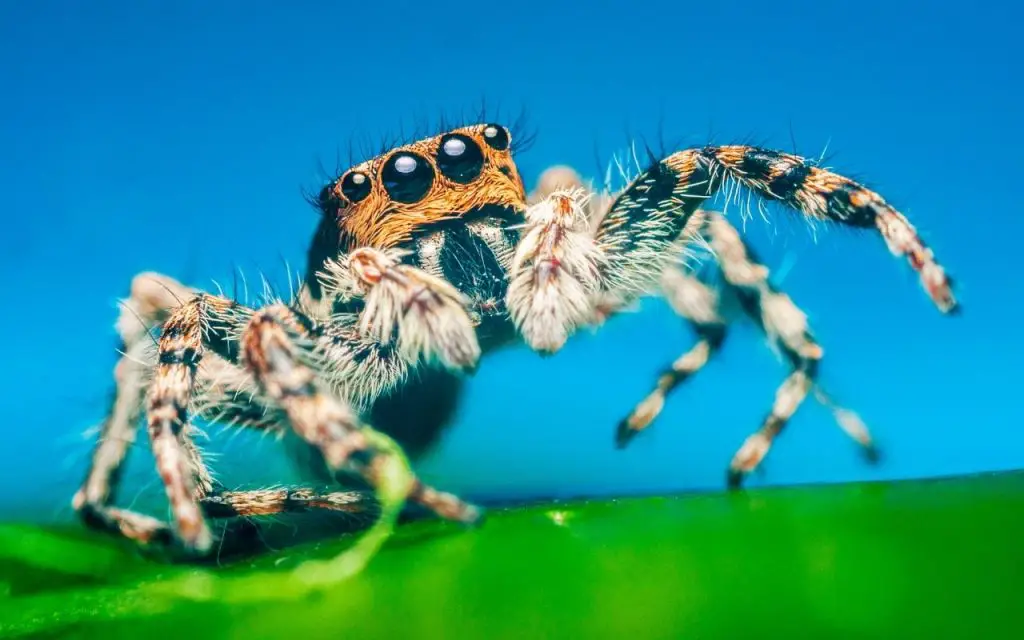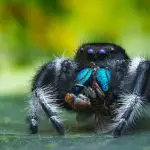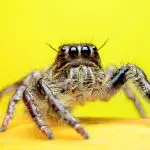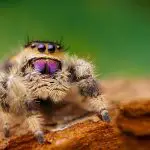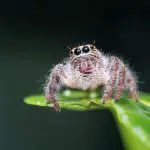Last updated on February 1st, 2023 at 10:04 am
Do Jumping Spiders eat other spiders? This might sound like an odd question – but it’s not. In fact, one of the top predators of spiders is their own kind…
Are jumping spiders capable of cannibalism? If so, what types of spiders do they eat? Can they eat very venomous spiders? Here are some of the most common questions about the feeding habits of these exceptional hunters. As you’re about to find out, other spiders are actually a large part of their diet.
Cannibalism in Jumping Spiders
Sexual cannibalism is common among many species of jumping spiders, and spiders as a whole. Females often eat males after mating and this behavior likely plays a significant role in the mating strategies of males.
These animals must weigh the advantages of mating success against the potential for predation to ensure their survival. This may lead to the evolution of unique courtship strategies. Cannibalism in jumping spiders is one of these complex interactions.
To avoid being eaten by a female jumping spider, the males perform colorful courtship dances. Often, females can distinguish different species by their courtship dances. It is thought that the males attempt to mate with anything that looks like a female.
Although this behavior is sometimes detrimental to the male, it is still an important aspect of jumping spider reproduction. However, the lack of discretion that these spiders possess can lead to their eventual death. Occasionally males try to mate with females that are not receptive, and decide to eat them instead.
The reason for this behavior is unclear. There are many theories regarding its origins, but it is generally agreed that male spiders are often rewarded posthumously by their females. In a nutshell, the females may eat a male, but mate with it too…
In Australian red back spiders, for example, males pirouette into the fangs of their mates to attract them. Females are likely to accept the offer 65% of the time.
Jumping spiders also practice non-sexual cannabalism, eating members of their own and other species. One species, the Fringed Jumping Spider (Portia fimbriata) is a spider-eating specialist. This is known as araneophagy.
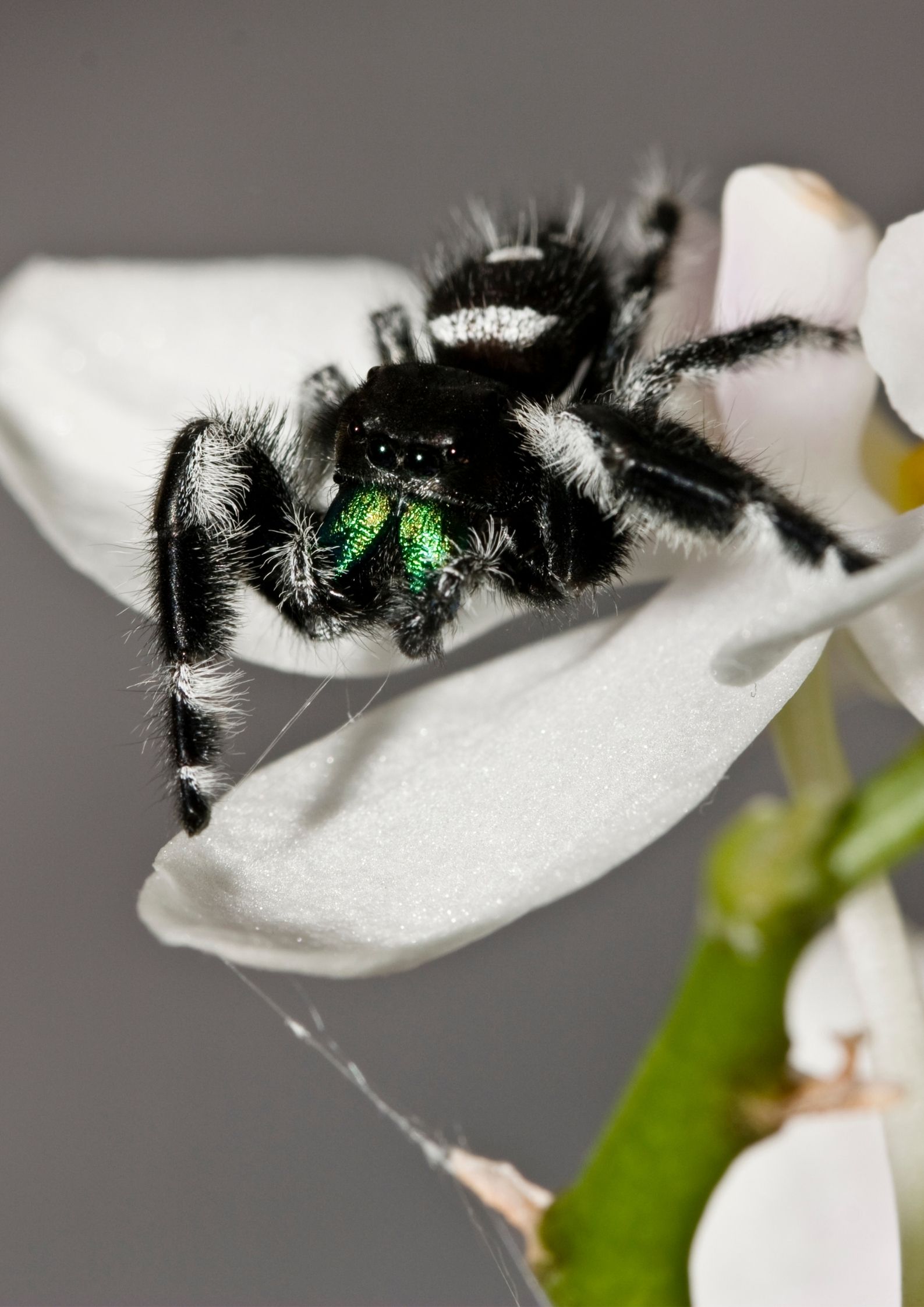
What spiders do jumping spiders eat?
Many species of jumping spiders feed on insects and spiders of similar size. They don’t care what kind of spider it is – so long as it is not too big to take down.
Jumping spiders have been observed eating:
- other Salticidae spiders
- Orb weavers
- juvenile Wolf Spiders
- Black Widows
- Brown Recluses
that said, there is always the possibility of a spider fighitng back and biting the jumping spider. So, in captivity, insects such as mealworms are a better choice for feeding your pet. You should also know that jumping spiders can sometimes miscalculate jumps and miss their target – making them vulnerable to a counter attack.
Young spiders may eat more than adults, so it’s important to pay attention to their eating habits to avoid overfeeding. Jumping spiders also eat a wide range of insects, though in captivity fruit flie, flightless fruit flies and crickets are usually the best choice.
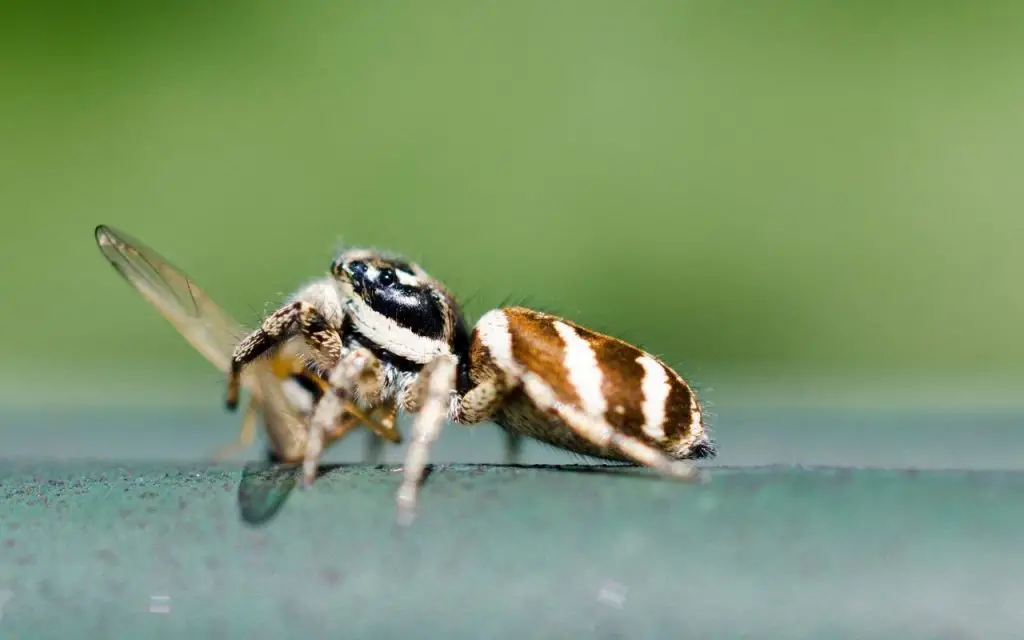
Do jumping spiders eat poisonous spiders?
Most jumping spiders are harmless to humans and their environment. While they do possess venom, they mainly use it to subdue their insect or spider prey.
They will bite only when threatened or trapped. While their venom is not harmful to humans, some people are allergic to certain species. In some cases, the bite can cause a short-lived welt. Jumping spiders can be a good option for those who live in areas with many types of poisonous spiders.
That said, jumping spiders are deadly to other spiders! They don’t care if they are poisonous – or more correctly – venomous, or not. They use their strength and agility to avoid being bitten and quickly overpower other spiders. Black Widows, Brown Widows and Brown Recluses are all highly venomous, and all fall prey to jumping spiders.
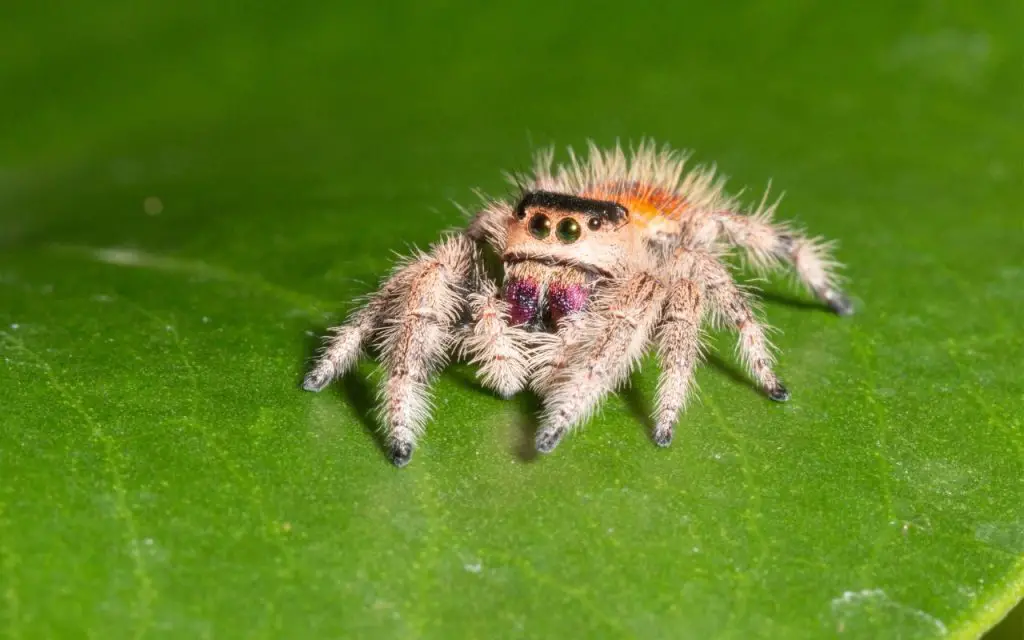
Do jumping spiders eat each other?
Some people believe that jumping spiders are social creatures, but they are not. In fact, jumping spiders can and do occasionally cannibalize each other. This is perfectly normal for both young spiderlings and adults. Sometimes female jumping spiders even eat males.
This makes a lot of sense though when you think about it. The perfect nutrition for a spider is in another spider! This is why some birds eat other birds, and some snakes eat other snakes.
Not all of them are cannibals though… Some spiders feed on plant material, such as leaflets and other structures that produce nectar. One species of jumping spiders, the Bagheera kiplingi, feeds primarily on liquids from acacia bushes.
This species is a rare vegetable eater, although some researchers believe that it may also feed on other insects.
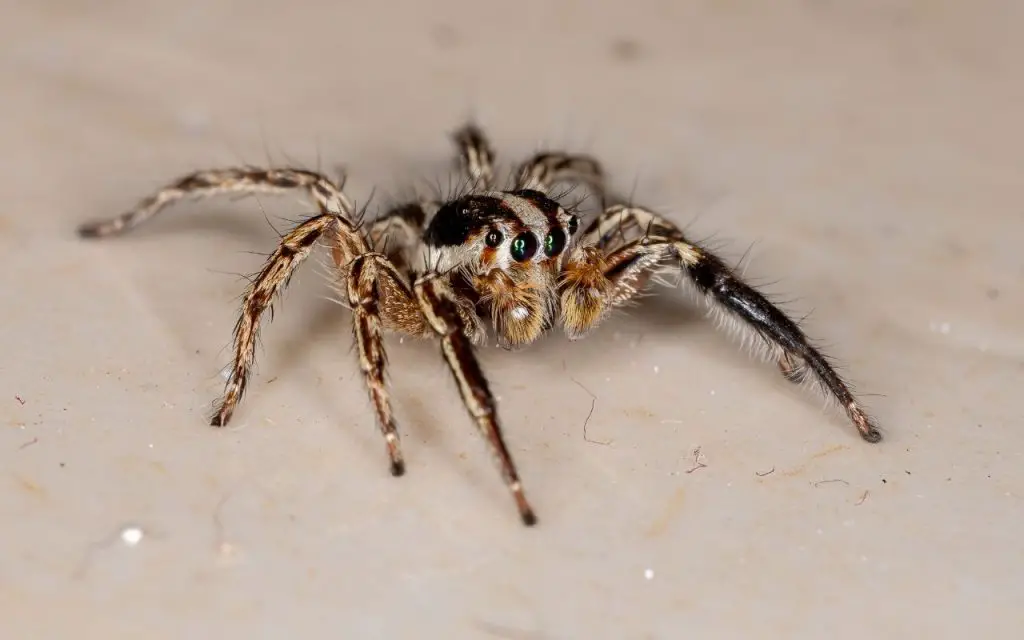
Are they aggressive?
Jumping spiders are a common household invader. They are known for their acrobatic behaviour and can leap accross surfaces. These spiders use their vision to determine which prey is suitable to hunt.
You can spot them by watching them stare at an object or turn their body to follow it. Their visual field extends about a foot and you can tell exactly what caught their attention by watching them. Unlike other types of spiders, jumping spiders are harmless and can be used as a pest control tool at home.
In general, jumping spiders are not aggressive and only attack humans when they feel threatened or in a dangerous situation. Their venom is weak and cannot poison larger animals or humans, but it can produce a slight sting if they are squeezed or cornered.
Overall, jumping spiders react well to humans. If you find one in your home you can easily herd it into a jar to put it outside. The worst it will do is try to jump away and give you a bit of a hard time catching it.
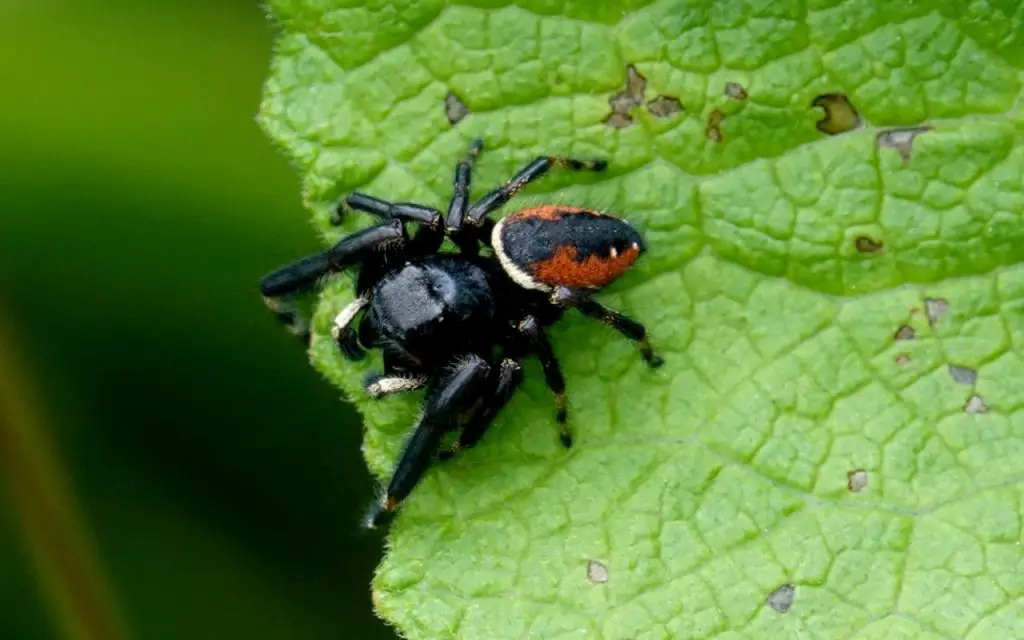
Do jumping spiders make webs?
Jumping Spiders do not make webs to catch prey. Instead, the prefer to stalk their prey by sight, and overpower it with their strong legs. Incidentally, spiders that do make webs tend to have weaker legs and rely on their web itself or stronger venom to subdue prey. Jumping Spiders tend to have weak venom and rely on strength and keen eyesight.
The spiders’ eyes are some of the most remarkable in the animal kingdom, enabling them to discern patterns far better than many other animals. Their central eyes are like tiny binoculars, with an enormous outer lens and a smaller inner lens.
These lenses magnify the image that they see and project it onto the retina. The eyeballs are movable because they have muscles attached directly to the retinas. This allows them to move the retinas from side to side and up and down, focusing on different segments of the world.
Jumping spiders are active hunters and diurnal. They do not make webs, but their internal hydraulic system makes them leap without the aid of large legs. Most of these spiders can jump several times their body length.
Before jumping, they tether themselves to an object with silk thread. Once they reach their target, they pounce using their legs. The jumps are accompanied by a high-velocity sting that is enough to kill the prey.
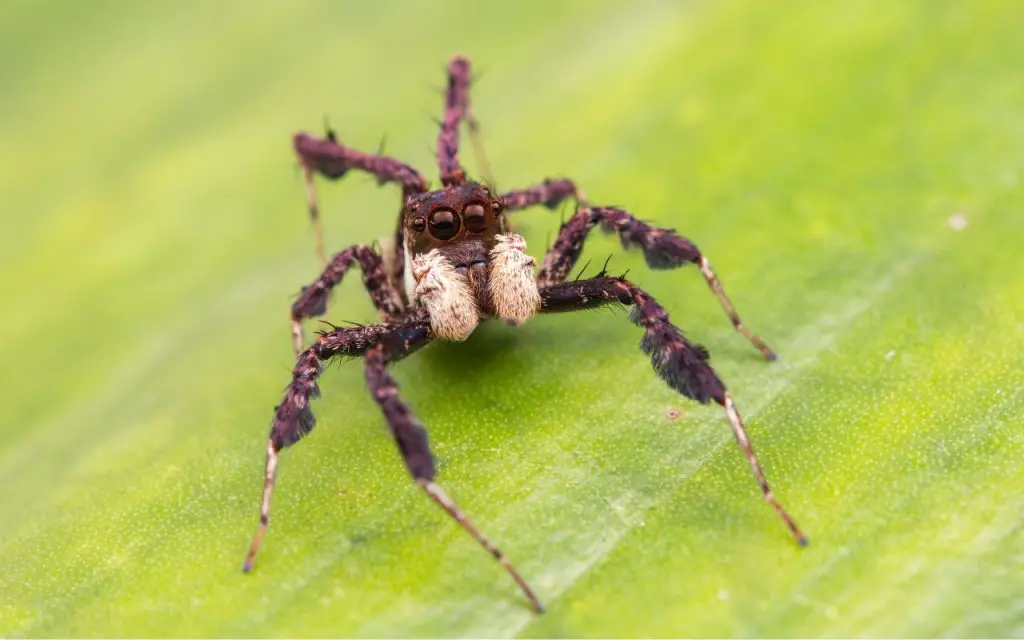
What is the smartest spider?
While most spiders do not have great eyesight, they are surprisingly good at spatial awareness. Using their spatial abilities, spiders can create intricate webs and maneuver through space without difficulty.
Even those with poor vision have some sort of memory, and some species are so sophisticated that they can even tell if a human is looking. However, it is unclear if this memory actually aids in the spider’s cognitive ability.
Although the most intelligent arthropod is the honey bee, there are many species of spiders with unique personalities. These differences are linked to decision making and hunting styles.
While the majority of spider species do not have good eyesight, they can still surprise us by carrying out complicated behaviors. While this does not necessarily mean that a spider is intelligent, it does show a level of awareness that is superior to other invertebrates.
The world’s smartest spider is the Fringed Jumping Spider (Portia fimbriata), sometimes also called the Portia Spider. This arachnid lives in Africa, Asia, and Australia, and has special abilities that allow it to move from branch to branch, stem to stem and web to spider web.
It can jump fifty times its body length and can move from one branch to another. It is known to be a calculating hunter and can learn from its experiences.
It uses this extreme hunting skill to specialise in eating other spiders and many scientists believe that this is why it developed such comparatively high intelligence: you have to be smarter than your prey!

